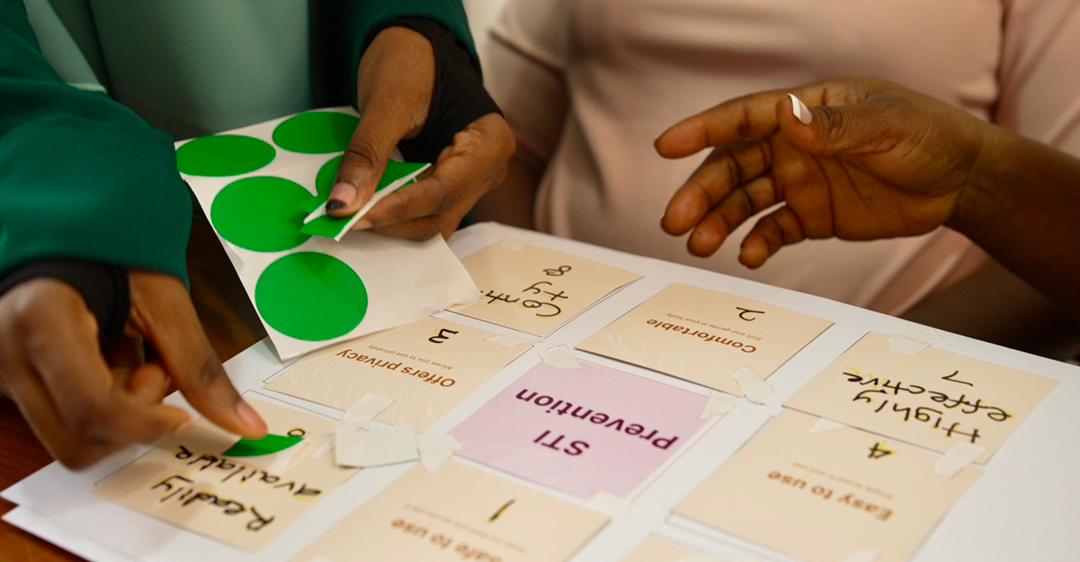Globally, women’s healthcare is an area that’s gotten the attention of many, one of the reasons is because it is an often marginalized part of healthcare that gets left out of research and solutions.
In light of this, women of reproductive age face unique health challenges, even more so in LMIC contexts. In Nigeria for instance, the intersection of varied cultures, beliefs, and behavioral patterns further influences the challenges that women face, often showing up in women’s needs, preferences, and experiences and how they navigate their choices in their reproductive health and well-being. In working with our global partners, one of the goals was to build effective solutions to meet these needs.
Utilizing one of Human-centered Design’s potent methods, we considered leveraging participatory design to include the women we intended to study, in the design process. Participatory design was our best bet in achieving this, as it centers people as co-designers, ensuring that the solutions or strategies generated are not just for them but are designed with them, reflecting their unique perspectives and heightening their engagement.
Our team conducted research in two geographically distinct regions of Nigeria (Southern and Northern Nigeria), and the goal was to bring the voices of these women and their communities into the heart of the design process. By working closely with them, we sought to test hypotheses relating to reproductive health concerns covering areas like menstrual hygiene, STI, family planning, and health solutions addressing multiple reproductive issues to uncover insights that would drive meaningful change and inform potential sustainable solutions effectively addressing the needs of this people group.
Getting Started

Team in a research planning work session
Every successful project begins with understanding who holds a stake in its success, and what their goals are. This was no different in this project. We identified three key groups that we needed to keep informed and involved all through the duration of the project: the women and communities we were designing for, our research and strategy partners, and the funders driving the initiative.
Once we determined who our stakeholders were, we proceeded to create a comprehensive research plan that covered designing interview questions in the most effective user-facing language, considering clear communication of research activities, recruiting participants, and then tailoring methodologies and contingency measures.
Our approach was deeply qualitative, designing research activities that encouraged active participation and effective collaboration. The immersive research process involved physical interactions as we did contextual research with participants, virtual engagements through WhatsApp channels, phone calls, and text messages, as well as iterative follow-ups that kept them actively engaged. From icebreaker games that set a relaxed tone to co-design activities that prioritized their voices, we created an environment where every participant felt valued and heard.
Key principles of participatory design in practice
Transparency, inclusion, and active collaboration were some of the principles of participatory design our team prioritized in designing research activities for this project.
By fostering transparency, we built trust and empowered the women to shape outcomes. We had open discussions at the beginning of the engagement with the women, clearly communicating the terms of engagement, highlighting the value of their contributions, and showcasing the potential benefits of their participation to their reproductive health outcomes in the near future.
Through inclusive methods tailored to their diverse backgrounds and needs, we ensured every voice was heard. Participants didn’t just share insights; they co-designed potential solutions for addressing their reproductive health issues. This approach unlocked cultural nuances and revealed decision-making patterns that shaped more practical, resonant outcomes.
Author
-

Melvina Okechukwu is a skilled UX researcher and designer with a solid foundation in design and research, combined with exceptional strategic thinking, dedicated to creating products that align with user needs and business objectives.
View all posts

